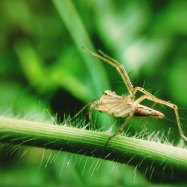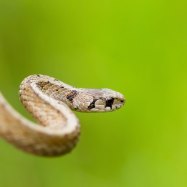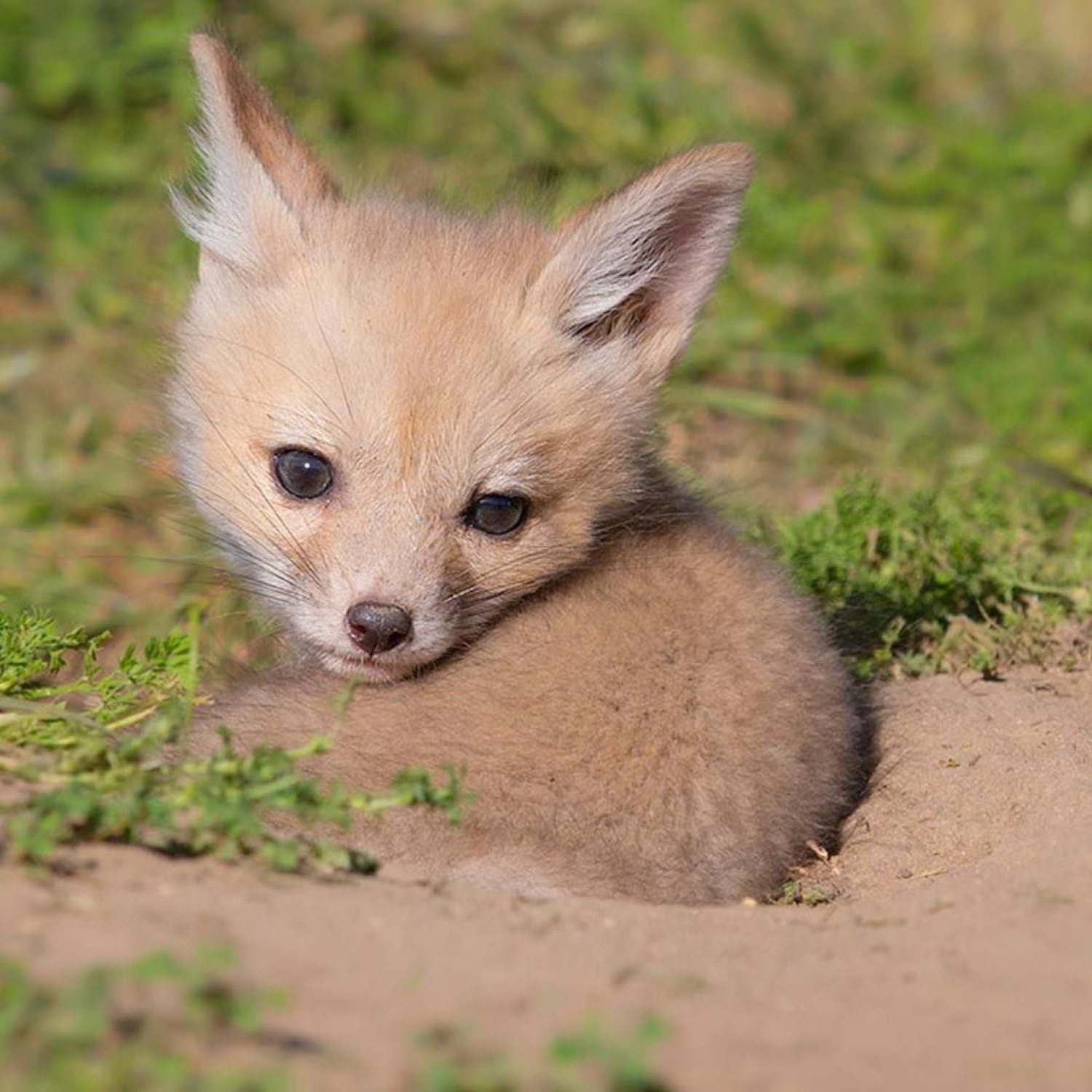
Kit Fox
18 to 22 inches
Kit foxes are small, yet fascinating creatures that can be found in North America. They belong to the Canidae family and have a body shape that is small, but with long legs and ears. They measure 18 to 22 inches in length and are known for their cute appearance. These stealthy hunters are an important part of the ecosystem and are a treat to spot in the wild. #KitFox #NorthAmerica #Canidae
Animal Details Summary:
Common Name: Kit Fox
Kingdom: Animalia
Habitat: Deserts, grasslands, and scrublands
The Kit Fox: A Tiny and Tenacious Carnivore of the Desert
The arid and vast landscapes of the deserts in the southwestern United States and northern Mexico may seem like a harsh and unforgiving environment, but it is home to a wide variety of unique and remarkable animals. One of these creatures is the Kit Fox, or Vulpes macrotis, a small and elusive member of the Canidae family. While it may not be as well-known as its larger relatives, the Kit Fox has many fascinating features and adaptations that make it a worthy subject to explore. From its petite size and distinctive coloration to its incredible survival skills, let us unravel the secrets of this tiny and tenacious carnivore Kit Fox.Appearance and Physical Traits
At first glance, the Kit Fox may seem like any other fox, but it has several distinctive physical features that set it apart. It has a slender and petite build, measuring only 18 to 22 inches in length and weighing between 3.5 to 5.5 pounds. This makes it one of the smallest canines in North America, a stark contrast from its larger and more well-known relative, the Red Fox. However, do not let its size fool you because the Kit Fox is a formidable predator, thanks to its agile and nimble body.One of the most remarkable physical traits of the Kit Fox is its disproportionately large ears, which can measure up to 4 inches long. These ears not only give the Kit Fox its signature look, but they also serve a vital purpose. As a resident of arid and hot environments, the Kit Fox has to deal with extreme temperatures regularly Krait. Its large ears help dissipate heat and regulate its body temperature, allowing it to survive in harsh conditions. The Kit Fox also has a grayish-brown coloration, making it blend in perfectly with its sandy and rocky surroundings, providing it with excellent camouflage.
Habitat and Distribution
The Kit Fox's adaptability is evident in the diverse habitats it inhabits. It can be found in deserts, grasslands, and scrublands, and can even thrive in human-made environments such as agricultural lands and urban areas. However, its primary range includes the southwestern United States and northern Mexico, specifically in Arizona, California, Colorado, Nevada, Utah, and Sonora and Chihuahua in Mexico.One of the reasons for the Kit Fox's broad distribution is its ability to adapt to different environments and food sources. While its preferred habitat is the open, arid landscapes of the desert, it can also survive in more vegetated areas, shifting its diet from primarily carnivorous to include more plant materials. This flexibility has allowed the Kit Fox to thrive despite human development encroaching on its natural habitat.
Diet and Hunting
As a member of the Canidae family, it is no surprise that the Kit Fox is a carnivore. Its main prey includes small animals such as rodents, rabbits, birds, and reptiles. Its small size and agility make it an excellent hunter, capable of chasing and catching its prey with ease. It also has sharp and strong teeth, which it uses to crush the skulls of its prey, making it a formidable predator despite its size.In true canid fashion, the Kit Fox is a territorial animal, marking its territory with urine and feces to warn off potential intruders. However, it is not a solitary creature, and can often be found living in small groups, making it a social species. As a group, Kit Foxes can cooperate to hunt down larger prey, such as mule deer fawns, which they would not be able to capture individually.
Survival in the Desert
Survival in the harsh and arid landscapes of the desert requires incredible adaptations, and the Kit Fox has several to help it thrive. As mentioned earlier, its large ears serve as heat regulators, but they also help improve its hearing, allowing it to detect prey and potential predators even in the night. Its long legs are also a vital adaptation, allowing it to cover long distances quickly while hunting or scavenging.Food and water are scarce in the desert, so the Kit Fox has developed the ability to survive with very little. It can go for long periods without drinking water, relying on the moisture it gets from its food. It also has the ability to slow down its metabolic rate to conserve energy during lean times. Additionally, the Kit Fox has specialized kidneys, which allow it to extract water from extremely salty desert plants, giving it a unique advantage over other animals in its environment.
Conservation Status
While the Kit Fox has adapted remarkably well to survive in the desert, it is facing several threats that endanger its future. Human development, resulting in habitat loss, is a significant concern, as well as accidental deaths from vehicle collisions. However, conservation efforts, such as monitoring populations, habitat restoration, and promoting coexistence between humans and Kit Foxes, have helped stabilize their numbers.In the United States, the Kit Fox is listed as a Least Concern species, indicating that its population is stable. However, in Mexico, it is listed as Endangered, highlighting the need for continued conservation efforts in the region.
The Kit Fox in Native American Mythology
Apart from its impressive physical and behavioral adaptations, the Kit Fox also plays a significant role in the mythology and folklore of several Native American tribes. For the Hopi people of Arizona, the Kit Fox is a sacred animal associated with the spirit world and serves as an intermediary between the living and the dead. In Navajo mythology, the Kit Fox is a trickster figure, often portrayed as clever and cunning but also mischievous.For the Pueblo and Zuni people, the Kit Fox represents bravery, adaptability, and survival in harsh conditions. Its ability to adapt and thrive in the desert environment serves as a reminder to these tribes to embrace change and persevere in the face of adversity.
The Kit Fox: A Fascinating and Resilient Animal
In conclusion, the Kit Fox may not be as famous or visually striking as some of its larger canid relatives, but it is undoubtedly a remarkable and resilient animal. Its small size, agility, and adaptability allow it to thrive in harsh desert environments, while its unique physical and behavioral adaptations make it a worthy subject of study and admiration. As we continue to try to coexist with the amazing creatures that share our planet, let us not forget to appreciate and protect the tenacious and determined Kit Fox.

Kit Fox
Animal Details Kit Fox - Scientific Name: Vulpes macrotis
- Category: Animals K
- Scientific Name: Vulpes macrotis
- Common Name: Kit Fox
- Kingdom: Animalia
- Phylum: Chordata
- Class: Mammalia
- Order: Carnivora
- Family: Canidae
- Habitat: Deserts, grasslands, and scrublands
- Feeding Method: Carnivorous
- Geographical Distribution: Southwestern United States and northern Mexico
- Country of Origin: United States and Mexico
- Location: North America
- Animal Coloration: Grayish-brown
- Body Shape: Small with long legs and ears
- Length: 18 to 22 inches
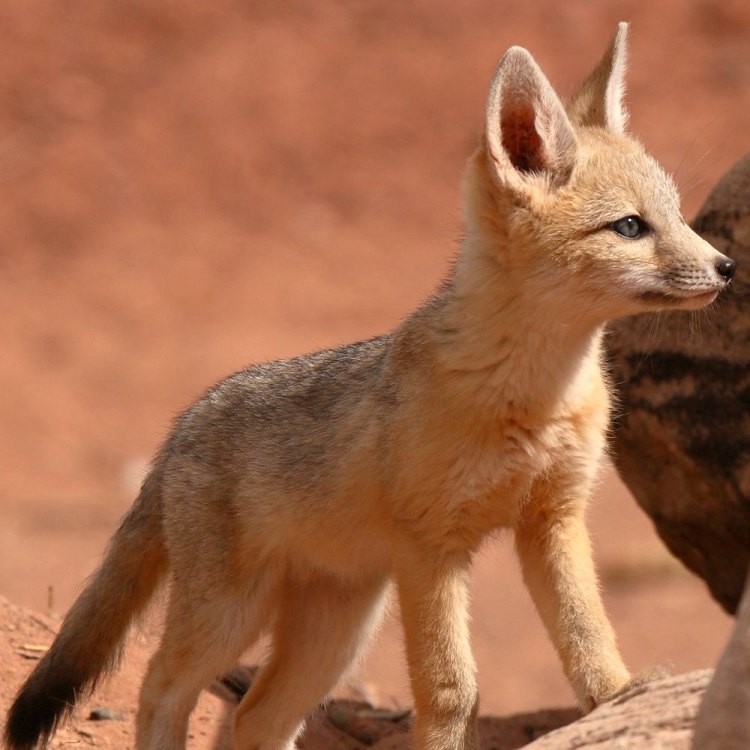
Kit Fox
- Adult Size: 3.3 to 5.9 pounds
- Average Lifespan: Up to 14 years
- Reproduction: Mating occurs from December to February
- Reproductive Behavior: Monogamous
- Sound or Call: Variety of vocalizations including yips, barks, and howls
- Migration Pattern: Non-migratory
- Social Groups: Solitary or small family groups
- Behavior: Nocturnal and primarily crepuscular
- Threats: Habitat loss, predation, and disease
- Conservation Status: Least Concern
- Impact on Ecosystem: Prey on small mammals and contribute to the ecosystem balance
- Human Use: Some are kept as pets
- Distinctive Features: Large ears and bushy tail
- Interesting Facts: Kit foxes have adapted to survive in desert environments
- Predator: Coyotes, bobcats, and birds of prey
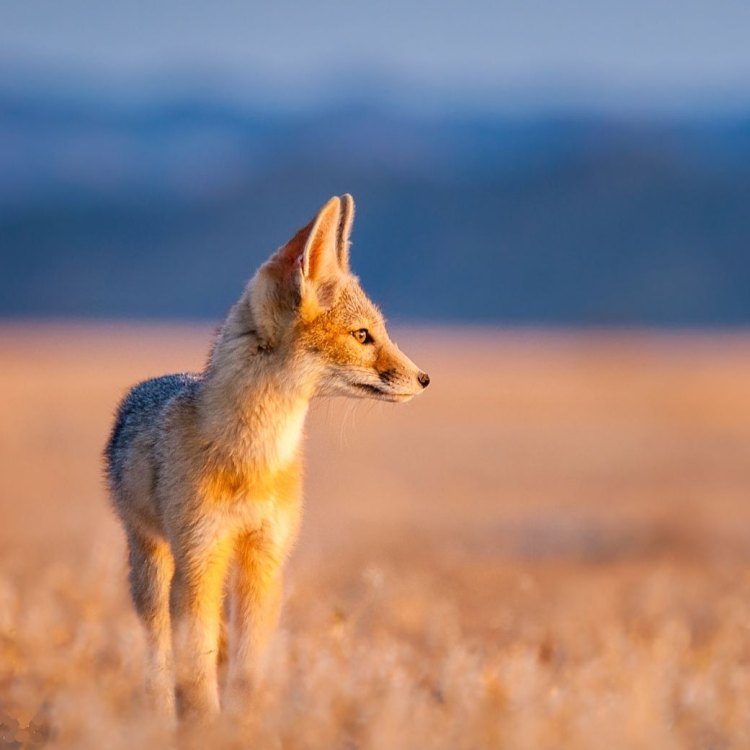
Vulpes macrotis
The Adaptable Desert Dweller: The Fascinating World of Kit Foxes
In the vast, dry deserts of the western United States and Mexico, a tiny but mighty creature roams the desert floor. The kit fox, also known as the swift fox, is a master of survival in one of the harshest environments on Earth. From its unique physical features to its complex social behavior, the kit fox has adapted to thrive in the unforgiving desert landscape. In this article, we will delve into the fascinating world of the kit fox, exploring its characteristics, behavior, and impact on its ecosystem PeaceOfAnimals.Com.Adapting to the Desert:
The kit fox (Vulpes macrotis) is a small member of the canine family, growing to an adult size of only 3.3 to 5.9 pounds. This diminutive size is no hindrance to its survival in the harsh desert environment; in fact, it has adapted several unique features to thrive in this habitat. One of the most distinctive physical features of the kit fox is its large ears. These oversized ears serve a vital purpose in regulating the fox's body temperature. By dissipating heat through the thin skin of its ears, the kit fox is able to withstand the scorching heat of the desert.
Another unique feature of the kit fox is its bushy tail, which is thought to have evolved to protect the fox from the hot desert sun. The fox can wrap its tail around its body to provide shade and keep cool Kingklip. Interestingly, the kit fox also sheds its thick winter coat during the summer months, allowing its coat to be lighter and cooler. This adaptability to extreme temperature changes is just one of the kit fox's many survival skills.
The Reproduction and Social Behavior of Kit Foxes:
Mating for kit foxes typically occurs from December to February, with peak activity in January. They are monogamous animals, forming strong pair bonds for life. During the mating season, the male and female will perform a beautiful courting ritual, chasing and playing with each other before eventually mating. After a gestation period of approximately 50 days, the female kit fox will give birth to a litter of 3-6 pups in a sheltered den.
Kit foxes exhibit complex social behavior, and their family structure is diverse. Some live solitarily, while others live in small family groups consisting of parents and their offspring from previous years. This structure allows for cooperative hunting and care of the young. Interestingly, kit foxes have been observed using dens previously occupied by other animals, such as prairie dogs, showing their adaptability and opportunistic nature.
The Nocturnal Life of Kit Foxes:
Being primarily active at night, kit foxes are considered nocturnal animals, but they are also crepuscular, meaning they are most active during dawn and dusk. This behavior is an adaptation to the hot desert climate, allowing them to avoid the scorching sun while still taking advantage of the cooler temperatures at night. As omnivores, kit foxes have a diverse diet, feeding on a variety of insects, small mammals, reptiles, and occasionally fruits and plants. They also prey on small rodents, which helps to control their population and maintain the delicate balance of the desert ecosystem.
Threats to the Kit Fox:
Despite their remarkable adaptations to survive in the desert, kit foxes still face several threats that endanger their existence. Habitat loss due to human development, such as urbanization and agriculture, is one of the biggest threats to their population. As native grasslands and shrublands are converted into cities and farmlands, kit foxes are forced to find new habitats, causing fragmentation and isolation of their populations.
Predation by other animals is also a significant threat to kit foxes, with their main predators being coyotes, bobcats, and birds of prey. The introduction of non-native species, such as domestic dogs and cats, has also increased their mortality rates. Disease, such as rabies and canine distemper, also poses a risk to the kit fox population.
Conservation Status and Human Use:
The kit fox is listed as a species of Least Concern by the International Union for Conservation of Nature (IUCN), with an estimated global population of 100,000 individuals. Despite this, several conservation efforts are in place to protect and monitor their population. For example, the US Fish and Wildlife Service has designated critical habitats for the kit fox, where human activities are regulated to prevent further habitat loss and degradation.
Despite being wild animals, some people keep kit foxes as pets. However, this practice is heavily discouraged, as it disrupts their natural behavior and puts additional pressure on their wild populations.
Interesting Facts About Kit Foxes:
Kit foxes are fascinating creatures with many unique and interesting characteristics. Here are some fun facts about these adaptable desert dwellers:
- The scientific name, Vulpes macrotis, comes from the Latin words for 'fox' and 'large ear.'
- Kit foxes can reach speeds of up to 25 miles per hour.
- They have excellent eyesight, allowing them to spot prey from far distances.
- Despite their small stature, kit foxes can jump up to 6 feet in the air.
- They have a variety of vocalizations, including yips, barks, and howls.
- Kit foxes have been known to survive without water for long periods, getting all the moisture they need from the food they eat.
The Kit Fox and Its Impact on the Ecosystem:
As a top carnivore in the desert food chain, the kit fox plays an essential role in maintaining the balance of the ecosystem. They prey on small mammals, keeping their populations in check and preventing overgrazing of vegetation. In turn, this contributes to the survival of plant species, which provide food and shelter for other animals. Without kit foxes, the desert ecosystem would suffer, making them a crucial player in maintaining the delicate balance of this unique landscape.
The Predators of the Kit Fox:
Like all animals, the kit fox has its own predators to worry about. Coyotes, being their closest relative in the canine family, are their most significant threat. With similar physical features, kit foxes must utilize their keen senses and quick reflexes to evade these predators. Bobcats, another common predator of the kit fox, rely on stealth and ambush tactics to catch their prey. Birds of prey, such as owls and hawks, also pose a danger to the kit fox, particularly young pups.
The Survival of the Adaptable Desert Dweller:
Despite the many challenges they face, kit foxes have adapted and thrived in their desert environment. From their unique physical features to their complex social behavior, they have gained the necessary skills to survive in one of the harshest places on Earth. From their role in the ecosystem to their impact on human culture, it is clear that kit foxes are an integral part of the desert landscape and deserve our admiration and protection.

The Kit Fox: A Tiny and Tenacious Carnivore of the Desert
Disclaimer: The content provided is for informational purposes only. We cannot guarantee the accuracy of the information on this page 100%. All information provided here may change without prior notice.

